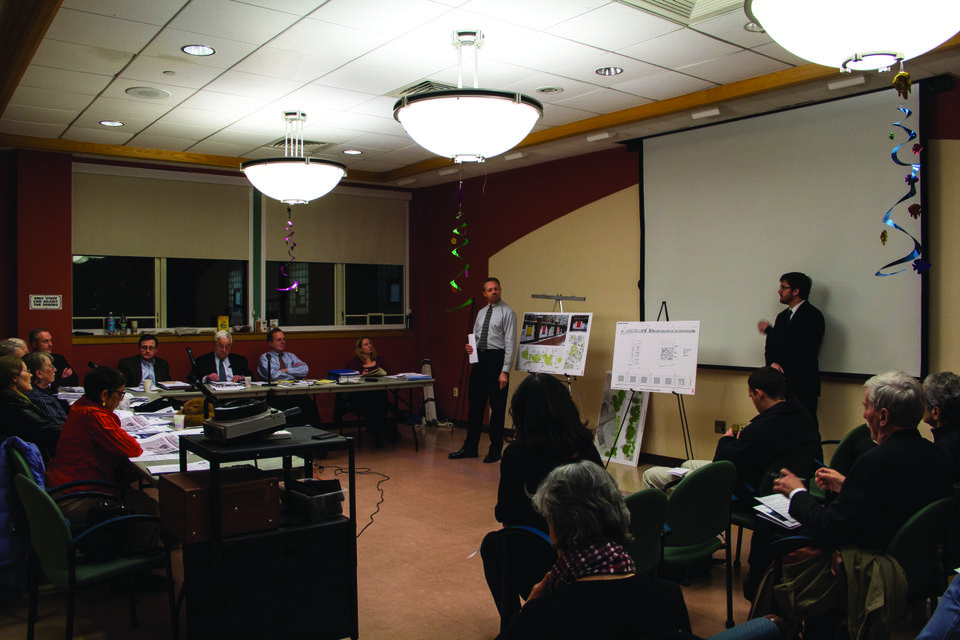
News
Summers Will Not Finish Semester of Teaching as Harvard Investigates Epstein Ties

News
Harvard College Students Report Favoring Divestment from Israel in HUA Survey

News
‘He Should Resign’: Harvard Undergrads Take Hard Line Against Summers Over Epstein Scandal

News
Harvard To Launch New Investigation Into Epstein’s Ties to Summers, Other University Affiliates

News
Harvard Students To Vote on Divestment From Israel in Inaugural HUA Election Survey
Harvard's Plan for Fence Panels Denied

The Cambridge Historical Commission has ruled that a Harvard fence is too great a work of art to be adorned with more art.
The Commission voted Thursday night to strike down a University proposal that would have affixed decorative panels to sections of the fence guarding entry to Harvard Yard in the Science Center Plaza.
The roughly 15 Cambridge residents in attendence for the Commission’s vote voiced sharp opposition to Harvard’s plan, which Cantabridgian Francis E. Donovan ’59 called a “gross misuse of these sacred wrought-iron fences.”
Officials in the Harvard University Planning Office had hoped to showcase colorful student artwork on the panels in an effort to foster a vibrant community atmosphere in the Science Center Plaza, which is currently being renovated as part of Harvard’s Common Spaces initiative.
But the Commission members who voted down Harvard’s proposal at Thursday’s public hearing said that the plan violated the historical and artistic integrity of Harvard’s wrought-iron fences.
“The fence itself is a work of art that needs to be treated with as much respect as a building,” commission member Chandra Harrington said at the hearing.
Cambridge residents in attendance echoed Harrington’s sentiment.
“Nothing could be more incongruous than posting signboards on that fence,” Donovan said.
Another Cambridge resident who spoke at the meeting, Marilee Myers, was more blunt. “You might as well hang a billboard around John Harvard’s neck,” she said.
Harvard oficials had planned to display the four-by-five foot panels on the sections of the fence that run between Meyer and Holworthy Gates during the fall and spring semesters. They had intended to establish a committee, likely comprised of Harvard students and faculty, that would select the art to be displayed.
The University was required to seek the approval of the Commission because the Harvard Yard Fence, like the Yard itself, is part of the Old Cambridge Historic District.
The Commission’s final vote to table Harvard’s plan, 6-2-1, reflected the abstention of Jo M. Solet, a clinical instructor at Harvard Medical School.
The vote did not close the door on an alternative University plan—which would fall outside of the Commission’s jurisdiction—to set up an exhibition of movable panels that would not directly touch the fence.
Cantabridgian James Williamson, who was present at the meeting, criticized what he called insufficient community outreach conducted by the University Planning Office in regard to the plan.
“Harvard missed an opportunity in not engaging its students and neighboring communities in the making of this project,” he said. “Hopefully the administration will learn for the future.”
—Staff writer Matthew Q. Clarida can be reached clarida@college.harvard.edu. Follow him on Twitter @mattclarida.
—Staff writer Antonio Coppola can be reached acoppola@college.harvard.edu. Follow him @AntonioCoppolaC.
Want to keep up with breaking news? Subscribe to our email newsletter.
